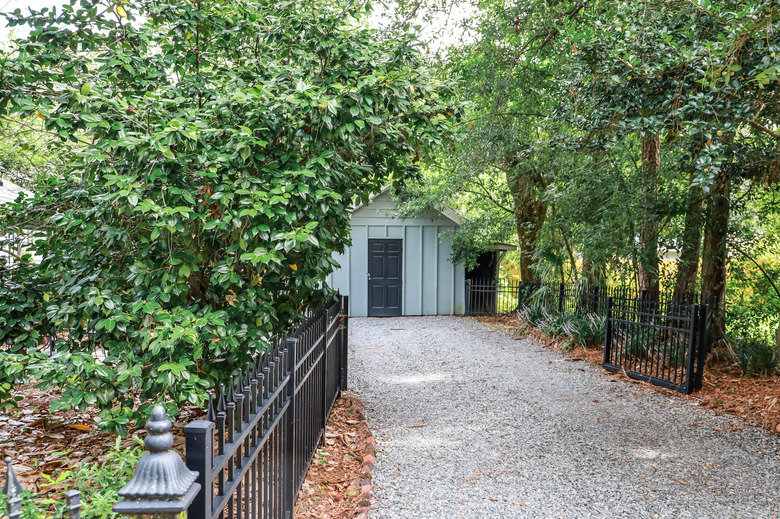How To Install A French Drain In A Gravel Driveway
We may receive a commission on purchases made from links.
A French drain or drain tile is one of a landscaper's best tools to address drainage problems. It basically consists of a gravel-filled trench containing a length of 3- to 4-inch perforated pipe with the perforations facing into the ground. The trench slopes toward a runoff point, and as water seeps into the trench, it soaks up through the ground into the pipe and is carried away.
A drainage pipe under a gravel driveway doesn't seem like a good idea because of the possibility of pipe breakage due to the weight of vehicles on the driveway. The pipe is protected by the gravel, though, and it won't break as long as the trench is deep enough — 18 inches or deeper. You're right if you think a trench that deep in a gravel driveway is difficult to dig, but you can usually do it with a walk-behind trencher, which you can rent.
Planning and Digging the Trench
Planning and Digging the Trench
The basic trench design for a driveway drain tile is an L shape. The trench follows the line of the driveway until it reaches the runoff point, where a lateral section runs across the driveway to a point off the driveway where it can flow away. Along the line of the driveway, you may need to install extra lateral sections at points where water tends to stand and form pools.
Before you begin digging, lay landscape fabric along the path of the trench and lay all the gravel you remove from the driveway on the fabric. You can reuse this later.
The trench needs to be 18 inches deep and at least 12 inches wide to work properly, and it needs to maintain a 2-inch per 10-foot slope toward the runoff point. As you're digging the trench, use a pair of stakes marked in 1-inch increments (like rulers) to help maintain the slope. Drive them at 10-foot intervals, tie a string between them, and check the level with a line level. If the slope is correct, the string will intersect the stake at the lower point 2 inches higher than the other one when the bubble in the level is centered.
Laying the Perforated Pipe
Laying the Perforated Pipe
Before laying 4-inch perforated pipe, you need to cover the bottom of the trench with 3 inches of angular gravel, such as 1/2-inch drain rock (do not use pea gravel), so you should dig the trench 3 inches deeper (at least 21 inches deep) to accommodate it. After you verify the slope and add the gravel, lay landscape fabric in the trench. It should cover the bottom and extend up the sides to the top of the trench. You'll wrap this around the pipe to prevent clogging from sediment.
Lay the pipe with the perforations facing down using elbow fittings to connect the lateral sections to the main drain. Backfill with 3 more inches of drain rock and then wrap the landscape fabric around the pipe and the gravel. Just fold over the fabric; you don't need to secure it with anything.
Completing Your Driveway Drain Tile
Completing Your Driveway Drain Tile
Once the pipe has been wrapped and covered, backfill the trench with more gravel. You can reuse some of the gravel you kept aside, but it's a good idea to save this for the very top layer and use new drain rock underneath. New rock is less likely to be mixed with sediment that could clog the drain. Backfill at least to the same level as the rest of the driveway, perhaps even a few inches above it to allow for settling in the trench.
Once you're finished, test the drain with a garden hose. Let the water run for about 10 minutes and check the outlets to make sure it's flowing out. If the drain is working properly, you shouldn't see any standing water on the driveway along the path of the drain.
